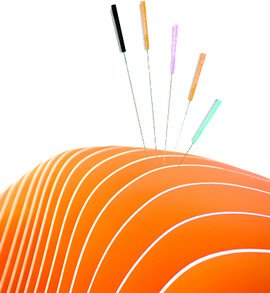 Sushi chefs will go to any lengths in order to serve up the freshest, tastiest seafood they can, and may eve use unconventional tactics to prepare fish for sushi. This is no small challenge for chefs far from the ocean, who are often frustrated by the rapid decline in the quality of fish as it is transported from the ocean to the table. In response, some sushi chefs have starting trying out unbelievably bizarre techniques, including my favorite, “acupuncture” for fish.
Sushi chefs will go to any lengths in order to serve up the freshest, tastiest seafood they can, and may eve use unconventional tactics to prepare fish for sushi. This is no small challenge for chefs far from the ocean, who are often frustrated by the rapid decline in the quality of fish as it is transported from the ocean to the table. In response, some sushi chefs have starting trying out unbelievably bizarre techniques, including my favorite, “acupuncture” for fish.
In some Japanese restaurants, fish is served up live and gasping, prepared right in front of guests as proof of their freshness. In countries where serving live fish is a little too risque for local palates, sushi chefs have had to become creative in finding ways to ensure their sushi is the freshest. “Kaimin katsugyo” is one such practice. Kaimin katsugyo, which translates to “Live Fish, Sleeping Soundly,” shares many similarities to acupuncture. Fish are pierced by needles with precision in spots which are a closely guarded trade secret of the company which pioneered the process, Osakano Kikaku, in Japan. Essentially, fish are brought into a coma-like sleep, unable to do anything but breath weakly, allowing for the fish to be bled out without stress and preventing early decomposition while in transit. While the fish do in fact die eventually in the 12 hour flight from Japan to North America, they keep the most basic of bodily functions, allowing them to breathe weakly instead of dying immediately from stress. For sushi chefs who are used to airlifted fish being of lower quality due to the strain the flight, kaimin katsugyo is a blessing – for a price. While the technique is claimed to allow for a fresher, more delicious fish, it also causes the fish to be roughly double the standard market value. Regardless of the price, fish treated by the kaimin katsugyo are in high demand, with the company selling out constantly with every shipment.
Leftover blood in a fish can cause rapid decay of tissue, which is why other methods focus on removing blood from the fish in order to keep it fresh. Chi-nuki, or strategic bloodletting, is a practice of surgical incisions in the fish to allow the still beating heart of the fish to pump blood out of the body. This practice can be used in conjunction with kaimin katsugyo, as the paralyzed fish is ostensibly unable to feel pain in what proponents of the practice believe is a more ethical way to enjoy sushi.
For those who are already skeptical of the benefits of acupuncture for humans, it might seem a little incredible that fish can have a zombie-like state induced by the needle punctures. But when you have a technique that has celebrities such as Katie Perry tweeting that they the “fish had previously had acupuncture” when dining at high end restaurants such as Montreal’s Antonio Park restaurant, the real benefits of the practice hardly matter. High end restaurants thrive off of being exclusive and the place to be, and serving up dishes off acupunctured sushi and hand massaged beef is exactly how to do it.
I have always been fascinated by the creation and culture of different foods, particularly sushi and sashimi in the modern era of Japanese cuisine. I am a classically trained chef and sushi connoisseur, also having operated a food service company and enjoy investigating and experimenting with food around the world.